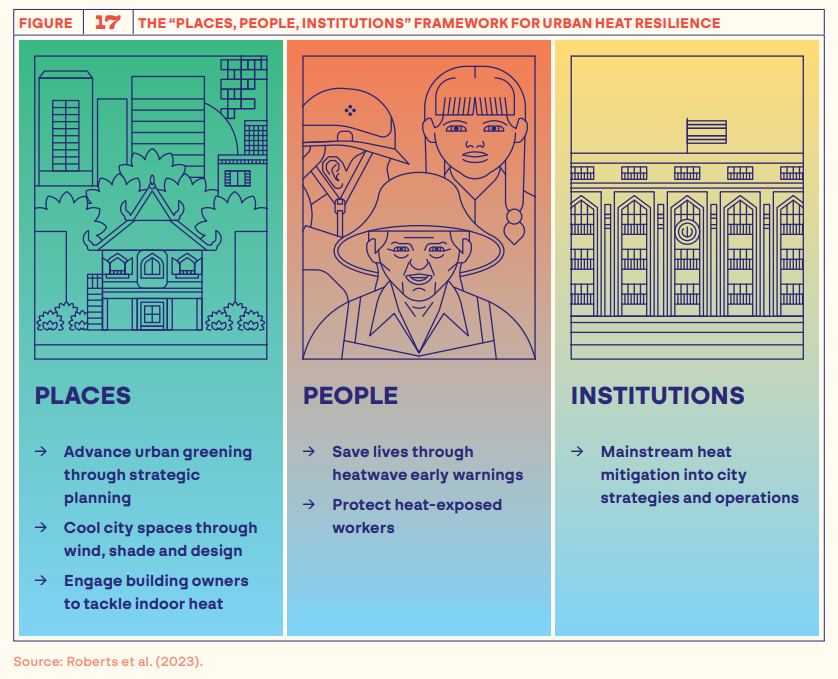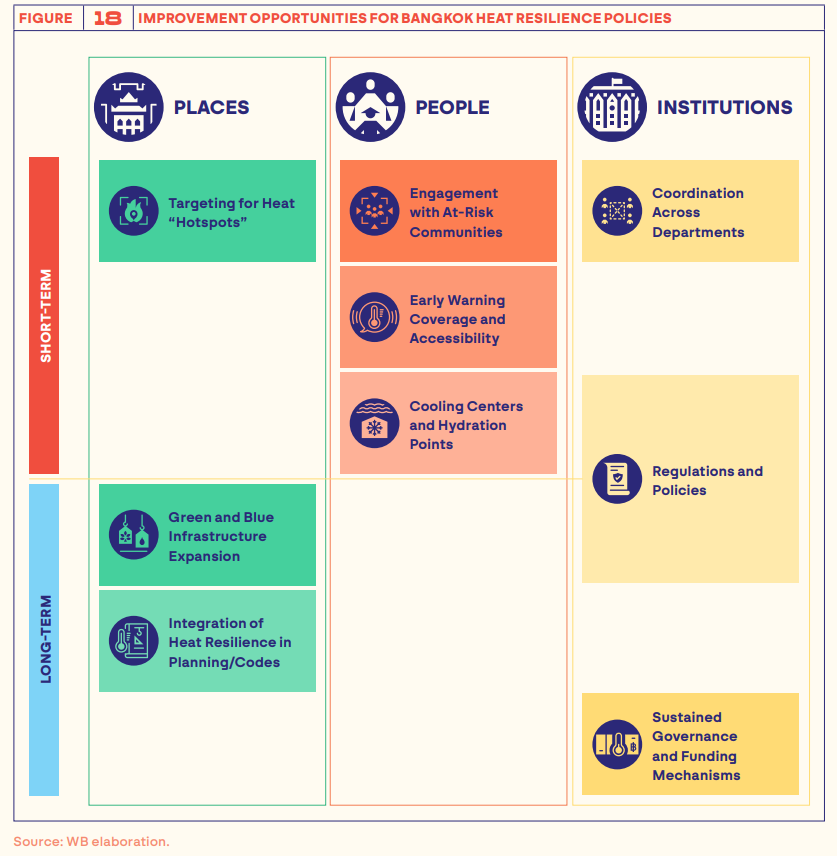Q&A: Collaborations to Cool a City – Lessons Learned from Bangkok World Bank Report
Published: May 19, 2025
…
The GHHIN Southeast Asia Hub spoke with Steven Rubinyi, first author of the World Bank report titled “Shaping a Cooler Bangkok: Tackling Urban Heat for a More Livable City”, to gather insights on their collaboration with the Bangkok Metropolitan Administration (BMA), and the city’s actions and strategies to tackle urban heat, in addition to how this can be applied to other cities in the region.

…
Hi Steven, thanks for making the time to answer a few questions on the recent World Bank report developed with Bangkok Metropolitan Administration (BMA).
How would you summarize the current challenges and measures in place that the Bangkok Metropolitan Administration (BMA) uses to address urban heat?
Bangkok faces intensifying urban heat due to a combination of rapid urbanization, reduced green cover, and climate change. Vulnerable populations—particularly outdoor workers, the elderly, and low-income communities—are disproportionately affected. The Bangkok Metropolitan Administration (BMA) has taken notable steps, including piloting cool roof and cool pavement initiatives, expanding green spaces, and integrating heat risk into its climate action plans. However, efforts have so far been fragmented. The Shaping a Cooler Bangkok report provides a comprehensive roadmap to unify and scale up these measures across the city.

The Report uses a “Places, People, and Institutions” framework. Could you expand more on what is meant by that and how that is applied to heat?
The “Places, People, and Institutions” framework helps ensure a holistic response to urban heat by addressing who is affected, where interventions should occur, and who must act.
- Places refers to the spatial concentration of heat risk and highlights priority zones for interventions, such as transport hubs, informal settlements, and low-canopy areas.
- People focuses on vulnerable groups like construction workers, informal vendors, the elderly, and young children—identifying tailored risk reduction strategies for each.
- Institutions addresses the enabling environment—outlining how BMA can lead cross-agency coordination, update regulations, and build the data systems needed for heat governance. This approach ensures that actions are both targeted and scalable.

With multiple departments involved, how does the BMA plan to streamline coordination across the various agencies to ensure unified and effective implementation of heat resilience strategies?
One key recommendation of the report is to establish a dedicated coordination mechanism on urban heat, embedded within BMA’s broader climate and resilience framework. This could be a formal task force or a lead unit within the Environment Department that ensures shared objectives, data systems, and budgeting across transport, health, urban planning, and public works departments. The report also outlines concrete actions for short-, medium-, and long-term implementation—mapped to agency responsibilities—to help operationalize this alignment.
Could you elaborate on how the BMA intends to enhance public awareness and education about the urban heat risks and strategies identified by the report?
The report highlights that improving public awareness is essential—not just for risk communication during heatwaves, but also to drive behavior change and political momentum. BMA is exploring options like integrating heat health tips into public messaging channels (e.g., traffic billboards, Line app), incorporating heat risks into school curricula and public health outreach, and strengthening partnerships with universities and community groups. We also propose the development of a localized Heat Health Action Plan tailored to Bangkok’s context.
How may the challenges and strategies identified in Bangkok be relevant to other Southeast Asian cities?
Many Southeast Asian cities share Bangkok’s challenges—rapid urban expansion, heat-trapping infrastructure, vulnerable populations, and limited coordination mechanisms. The Bangkok case demonstrates the value of mapping heat exposure, vulnerability, and infrastructure gaps at the city level, and aligning those insights with concrete policy actions. Other cities can adapt this framework to their context and benefit from Bangkok’s early lessons on how to institutionalize heat action in urban planning.
What do you think other Southeast Asian cities can learn from your process of developing this report?
Three main takeaways stand out:
- Evidence matters: Localized data on who is affected and where risk is concentrated helps turn an invisible threat into an actionable agenda.
- Co-production builds ownership: The report was developed hand-in-hand with BMA’s technical departments, which created strong buy-in for implementation.
- Framing heat as a development issue—not just a climate one—broadens the coalition for action: We tied heat to productivity losses, inequality, and livability, which helped mobilize different sectors.
With this report out for over a month, what have been the immediate next steps for BMA and the World Bank?
Following the launch, we’ve seen strong momentum. BMA has begun identifying two to three high-risk districts where pilot interventions—like shaded corridors, retrofitted public buildings, and cool pavement upgrades—can be tested and monitored. The World Bank is supporting this through technical assistance and engagement with potential financing partners. We’re also working with the Bangkok Metropolitan Research and Development Institute to embed heat resilience into the city’s next-generation spatial plans and performance indicators.

To read the report in more detail, download the report here: